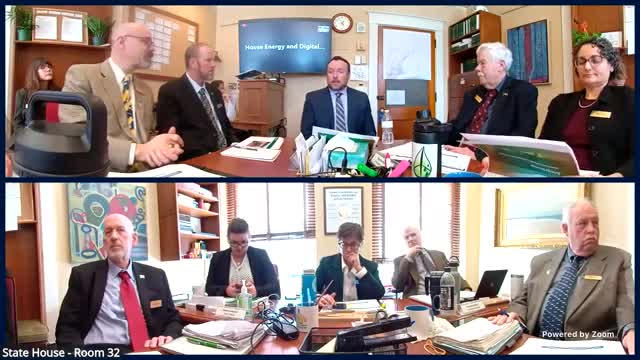Energy Storage System Optimizes Grid Management During Peak Hours
March 29, 2025 | Environment & Energy, HOUSE OF REPRESENTATIVES, Committees, Legislative , Vermont
This article was created by AI summarizing key points discussed. AI makes mistakes, so for full details and context, please refer to the video of the full meeting. Please report any errors so we can fix them. Report an error »

During a recent meeting of the Vermont House Energy and Digital Infrastructure, discussions centered on the critical role of energy storage in managing peak electricity demands, particularly during high usage hours. The meeting highlighted how advancements in solar energy and battery storage systems are transforming the state's energy landscape, providing significant benefits to residents.
One of the key points discussed was the timing of peak energy usage, which typically occurs in the early evening hours. As energy demands rise, especially with the increasing use of heat pumps, the ability to store and discharge energy becomes essential. The meeting emphasized that by strategically discharging stored energy during peak times, the state can effectively manage its electricity load, reducing the need for costly infrastructure upgrades.
The integration of solar energy has already shifted peak usage patterns, allowing for a decrease in daytime energy demands. This shift not only helps in stabilizing the grid but also supports the state's goals for a more sustainable energy future. The discussions underscored the importance of forecasting energy loads and preparing battery systems to respond to these demands, ensuring that the grid remains reliable and efficient.
Additionally, the meeting touched on the potential for localized energy management. By utilizing storage solutions, Vermont can address specific issues at substations, further enhancing grid stability and reducing the likelihood of future upgrades. This proactive approach to energy management is expected to have a positive impact on the community, ensuring that residents have access to reliable and affordable electricity.
As Vermont continues to embrace renewable energy solutions, the outcomes of these discussions will play a crucial role in shaping the state's energy policies and infrastructure. The focus on energy storage not only addresses immediate needs but also aligns with broader community goals for sustainability and resilience in the face of changing energy demands.
One of the key points discussed was the timing of peak energy usage, which typically occurs in the early evening hours. As energy demands rise, especially with the increasing use of heat pumps, the ability to store and discharge energy becomes essential. The meeting emphasized that by strategically discharging stored energy during peak times, the state can effectively manage its electricity load, reducing the need for costly infrastructure upgrades.
The integration of solar energy has already shifted peak usage patterns, allowing for a decrease in daytime energy demands. This shift not only helps in stabilizing the grid but also supports the state's goals for a more sustainable energy future. The discussions underscored the importance of forecasting energy loads and preparing battery systems to respond to these demands, ensuring that the grid remains reliable and efficient.
Additionally, the meeting touched on the potential for localized energy management. By utilizing storage solutions, Vermont can address specific issues at substations, further enhancing grid stability and reducing the likelihood of future upgrades. This proactive approach to energy management is expected to have a positive impact on the community, ensuring that residents have access to reliable and affordable electricity.
As Vermont continues to embrace renewable energy solutions, the outcomes of these discussions will play a crucial role in shaping the state's energy policies and infrastructure. The focus on energy storage not only addresses immediate needs but also aligns with broader community goals for sustainability and resilience in the face of changing energy demands.
View full meeting
This article is based on a recent meeting—watch the full video and explore the complete transcript for deeper insights into the discussion.
View full meeting